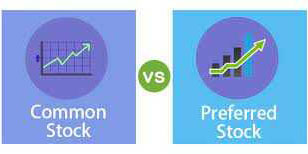Introduction
One definition of a "command economy" is an economic paradigm in which the government controls how services and goods are priced and produced. In a command-based economy, also known as a planned economy or a command economy, the central authority decides what goods and services to make, how they will be made and distributed, and how much they will cost. The principal planner is the government.
Both Command vs. Mixed Economy structures can be found in the multi-economy system. As a result, it is heavily influenced by the forces of demand and supply. Mixing capitalism with socialism, many of the world's major economies are mixed economies that adopt fiscal or monetarist measures to stimulate growth when the economy is in decline. Bailouts of firms, adjustments in interest rates, and other efforts to stimulate the economy are examples of this stimulus.

Command Economies
The state owns and controls most of the resources in this system and distributes them according to an approved plan. Five-year plans were the standard operating procedure for communist governments during the twentieth century. Governments decide how things should be produced and how capital, labor, and natural resources should be allocated. Each industry has its minimum wage, which the government regulates.
As a direct result of Karl Marx's theories from the 19th century, communism exists today. Due to the concentration of productive resource ownership in the hands of a tiny and wealthy elite, Marx referred to capitalism as the free market system. That's what Marx predicted would happen since capitalists would decrease wages to make more money. He thought that everyone should profit from the sharing of resources.
Mixed Economies
Planned economies and free markets are not mutually exclusive. Markets and planning procedures are used in every country. However, some countries rely more heavily on it than others. For example, the government still controls a large portion of the economy in both Cuba and China. Free enterprise is significantly more prevalent in countries like the United States and Hong Kong, where private enterprises control a larger share of economic activity. According to the percentage of GDP utilized for taxation, the countries can be compared. It's inversely proportional to the rate of government engagement. As a result, the United States has a more market-based economy than most of Western Europe, where governments typically collect around 40% of GDP in taxes. In comparison, the United States collects less than 30% of GDP in taxes.
Benefits of a Mixed Economic System
The resources in the business sector are efficiently distributed to those who require them the most. Because of this, customers' needs are better satisfied. Companies that can produce their goods more efficiently will be able to command a higher profit margin in an environment free of competition. The investment of money to boost manufacturing efficiency and innovation is consequently a business imperative. To ensure that customers get the most bang for their buck.
The monetary types of a command economy and a mixed economy are the same. There is no government intervention in a diverse economy; as a result, market actors decide on the balance based on their aims. A command-based economy, on the other hand, gives the government total authority over the economy as a whole. Financial supporters are hesitant to pour money into the country since government mediations often hamper private enterprises. A fair conciliation, on the other hand, should shield consumers from the market's sway and address the economy's cultural ramifications. Generally, a mixed-system economy is the optimum for individual and cultural well-being.
Pros
The government, not the market, should decide people's wages, and everyone should have access to healthcare, housing, and retirement. There is less risk of unemployment in a planned economy since the government manages the resources and ensures that everyone has a job.
Cons
Consumers have very little control over the services they receive, as they are forced to select any state-approved providers. Insufficient creativity - lacking the drive to make money or face up against others. They are not motivated to improve the quality of their products and services if the government owns them. Inefficiency, A lack of monetary incentive or fear of insolvency, prevents producers from looking for ways to reduce costs and maximize the use of resources.

Conclusion
The government has the final say over everything in a planned or command economy. There is some impact from the government in mixed economies, but the rest is up to supply and demand. Large surpluses, deficits, monopolies, and state-set prices are hallmarks of command economies. Economic growth is encouraged by using fiscal or monetary policies and the presence of a public and private sector.



